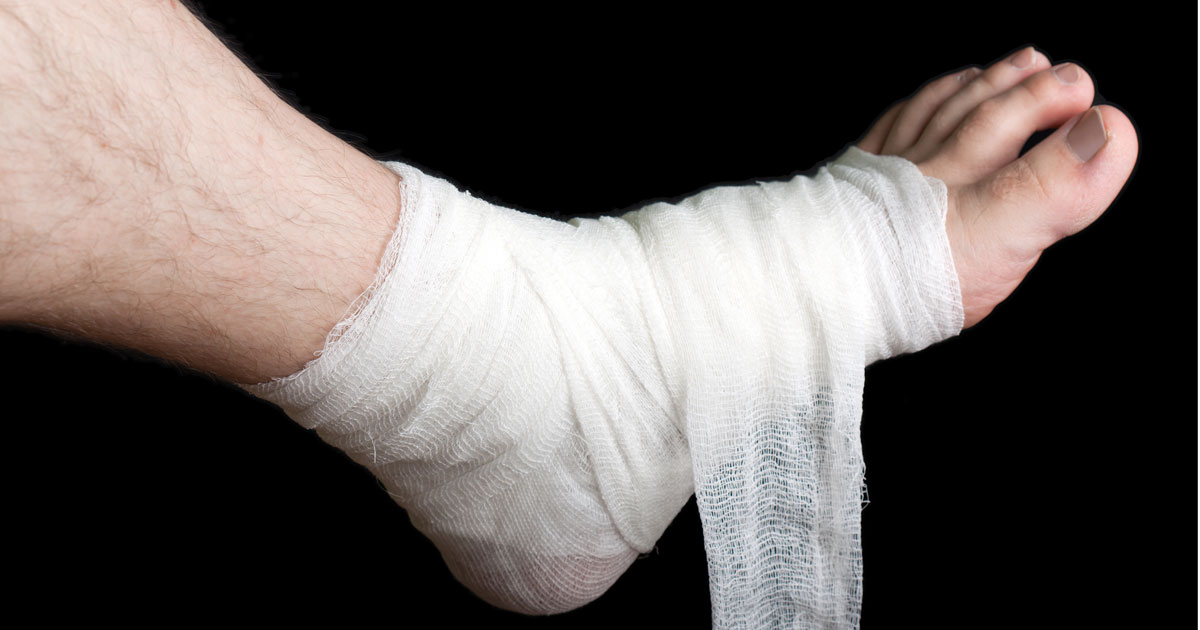According to a 2014 survey from the American Podiatric Medical Association (APMA), nearly eight out of 10 Americans admit to having foot pain at some time in their lives. A Bureau of Labor Statistics report from the same year noted that there had been more than 52,000 annual cases of workplace injuries to the feet.
Foot trauma and chronic foot pain is widespread, and for an employee on their feet or all or part of the day, a foot injury can be devastating. This is especially true if it impacts the injured person occupationally but recreationally as well. After all, a hurt foot can limit walking, effectively reducing a person’s basic mobility.
How can employees’ feet get injured in the first place? In some cases, an on-the-job accident will lead to a foot injury. In other situations, the wrong protective gear may be worn or simply not issued. Safety protocols might be overlooked. Even a poorly designed workspace can turn out to be a hazard. Whatever the reason, you should stay on the lookout for the most common kinds of foot-related injuries that can cause employees to file for workers’ compensation.
Sprains
When ligaments and other soft tissues undergo a trauma or tear, they are sprained. For instance, a worker who twists their foot awkwardly in a cramped space while moving a heavy box may suffer a sprained ankle.
Sprains take time to heal, and occasionally may require surgery. If a sprain is not treated correctly, the injured worker could end up with a pronounced limp.
Breaks and Fractures
There are many bones in the foot, any of which can break. A broken bone can make it difficult to move freely and may be painful. Sometimes, surgical intervention is necessary to properly set a broken foot bone.
Bone stress fractures can be less severe than full-blown breaks. Nevertheless, they can throb and cause just as much swelling as breaks. Stress fractures can heal sometimes without extensive physical therapy but require rest.
Bunions
Workers who are on their feet all day or wearing ill-fitting work-related footwear may be at risk of developing bunions. A bunion presents itself along the underside of the big toe near the joint with the rest of the foot. It is essentially a bony bump.
Older employees and those with conditions like arthritis may be more prone to developing work-related bunions. The good news is that bunion pain can often be relieved without surgery.
Plantar Fasciitis
Though plantar fasciitis falls under the category of a heel injury, it can cause radiating pain that affects the entire foot. Not only is plantar fasciitis uncomfortable, but it can take a long time to resolve.
Often, the most reliable way to reduce the inflammation and stress of plantar fasciitis is to switch to a different shoe type, as well as to stay off the feet for long periods. Consequently, a worker diagnosed with plantar fasciitis may need to use workers’ compensation in addition to asking for special accommodations.
Achilles Tendinitis
You may already know that the soft tissue connecting your calf to your heel, scientifically known as the calcaneal tendon, is much more commonly called the Achilles tendon. Like all tendons, it can be overexerted or damaged. Sometimes, standing on hard surfaces for long periods can be enough to cause the tendon to become inflamed and sensitive.
As with plantar fasciitis, rest is the best way to heal Achilles tendinitis. It is important to catch Achilles tendinitis early for optimal recovery.
Cuts and Burns
It is not unusual for employees who are around sharp objects like nails or machinery such as saws to experience foot cuts and punctures, even while wearing shoes. Similarly, workers who come into contact with chemicals or heat sources may end up with foot burns. Electric shocks can also lead to burns.
The severity of a cut or burn can mean a lifetime of discomfort, or even the inability to continue working in the same occupation.
Avoiding Workplace Foot Injuries
The easiest way to avoid the problems associated with on-the-job foot injuries is to prevent the injuries from happening. Some of the more dependable strategies include:
- Wear appropriate footwear. The right types of shoes and protective gear can stop foot injuries at the source. For example, workers who regularly stand outside in very cold weather for hours will need insulated footwear. Similarly, people who are around heavy machinery and tools will likely want footwear with steel toe caps.
- Take regular breaks. Standing for a long time can stress both the hard and soft tissues of the feet. Taking occasional sitting breaks can alleviate pressures and help the body recover.
- Attend all training. Even if you think you already know how to keep your feet healthy at work, you should still participate in any safety training. Your participation shows that you are actively working toward a healthier environment.
- Take foot pain seriously. Many workers wait longer than they should to take care of foot pain. Going to a doctor at the first indication of a problem can help you mitigate worsening issues. If you know you have been injured on the job, you should see a physician right away to examine your foot and make recommendations. Afterward, tell your employer and start your workers’ compensation claim, if applicable.
- Wear the right types of socks or stockings. Sometimes, the socks and hose you wear under your shoes can make them fit poorly. Always pick clean, properly fitting socks and other garments.
- Avoid rushing through tasks. Trying to meet a deadline can lead to serious mistakes, including hurting your feet. When you find yourself rushing to complete a job, slow down to lessen the likelihood of injury.
Can You Receive Workers’ Compensation for Foot Injuries?
If you experience a foot injury while you are “on the clock,” you have the right to make a workers’ compensation claim. Start the process by speaking with your supervisor or human resources representative. You also may want to get advice from a workers’ compensation lawyer if you feel that your claim may be denied or challenged by your company or the insurance carrier.
Camden County Workers’ Compensation Lawyers at Pietras Saracino Smith & Meeks, LLP Help Injured Employees Get the Benefits They Deserve
Did a workplace foot injury affect you? If your claim was challenged or denied, please reach out to our Camden County workers’ compensation lawyers at Pietras Saracino Smith & Meeks, LLP. You can reach us at our Cherry Hill, NJ office by calling 856-751-7676 or filling out an online form. We serve clients in Maple Shade, Camden, Delran, Pennsauken, Cinnaminson, and throughout South Jersey.













